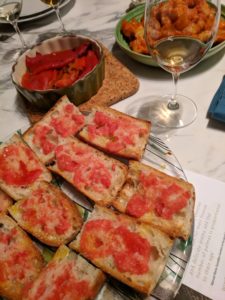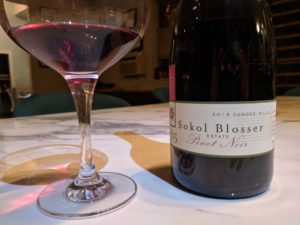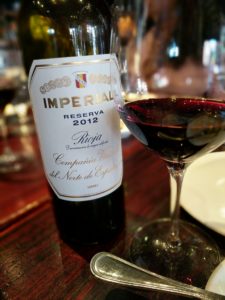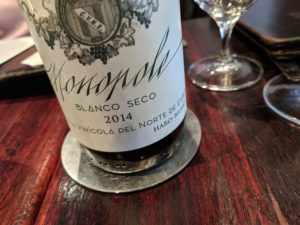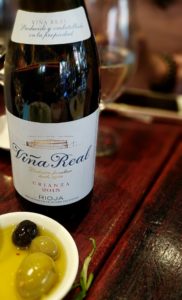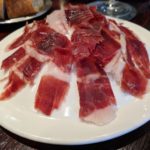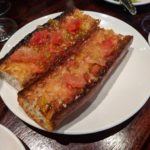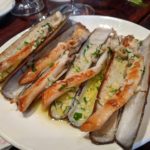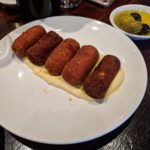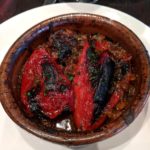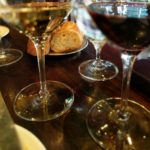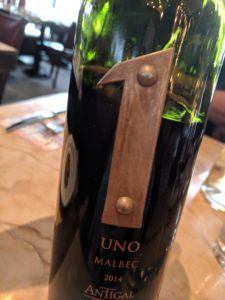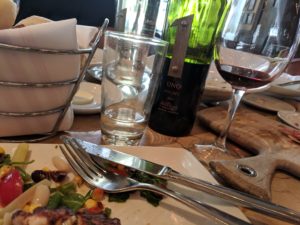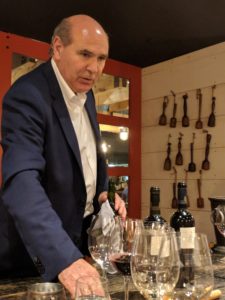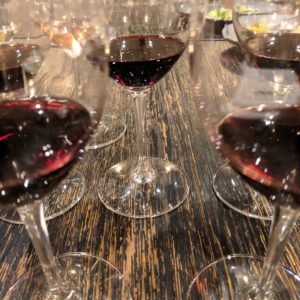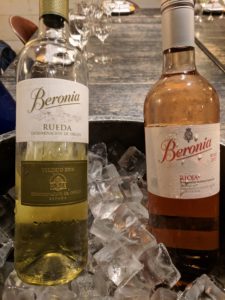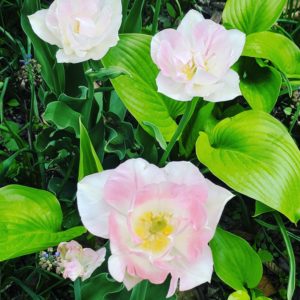 Some might say I have a long history with suitcases. Yes, of course, for travel, but I was also once voted, “Most likely to lock herself in a suitcase.” Admittedly, it was a joke, but I had fallen asleep in my suitcase only the week before (see photo), so the superlative was a bit apt.
Some might say I have a long history with suitcases. Yes, of course, for travel, but I was also once voted, “Most likely to lock herself in a suitcase.” Admittedly, it was a joke, but I had fallen asleep in my suitcase only the week before (see photo), so the superlative was a bit apt.
But seriously, I still remember my earliest suitcase – a big, light blue American Tourister (yes, the one I took a nap in), that made its way to Saint Croix, Florida, Hawaii and Israel. Later on, I was gifted with a matching duffle and suiter, which served me well for many years.
 But, as a newly-wed adult, it was time for larger, more sturdy cases, so we christened our marriage with a set purchased at Macy’s, opting to buy three different sizes of the same bag: large, medium and small. This was in the days before airlines charged for luggage (yes, I am that old!). We eventually ran them ragged and decided to up our luggage game, falling in love with Tumi, which we purchased at their outlet. Our twin, T-Tech carry-ons took us all around the world, journeying to Mexico, Morocco, South Africa, New Zealand and many more destinations. However, on a trip to Italy, I found a new love and vowed that my next suitcase would be a Rimowa, planning to splurge on the luxury case when the time came.
But, as a newly-wed adult, it was time for larger, more sturdy cases, so we christened our marriage with a set purchased at Macy’s, opting to buy three different sizes of the same bag: large, medium and small. This was in the days before airlines charged for luggage (yes, I am that old!). We eventually ran them ragged and decided to up our luggage game, falling in love with Tumi, which we purchased at their outlet. Our twin, T-Tech carry-ons took us all around the world, journeying to Mexico, Morocco, South Africa, New Zealand and many more destinations. However, on a trip to Italy, I found a new love and vowed that my next suitcase would be a Rimowa, planning to splurge on the luxury case when the time came.
The time came last fall, when hubby and I decided that we needed to replace our dearly beloved, yet tired, Tumis. Recalling my desire to invest in Rimowa, I looked up the options, but wasn’t so sure this was the way to go after all. And, damn, they were expensive if you wanted all the bells and whistles!
Around the same time, I had started to see the ads for Away on the subway and was intrigued by these streamlined cases, which offered up integrated TSA-approved locks, charging stations for powering your phone on the fly and were well priced. We headed to the NYC store to check them out and were duly impressed. Hubby pulled the trigger a few weeks later, ready to take his on an upcoming business trip.
Not quite convinced, I questioned if the Away format was indeed the way to go as I watched my husband pack his new case and pondered my choices. I soon realized that the clam-shell format was actually a deal-breaker. The idea of having to figure out, which things to pack in which half of the case seemed troublesome at best. So, I set about finding the few cases that still offered a traditional format. And, while the original brief had been focused on finding a four-wheeled, hard-side option, it was clear that I would have to rethink this as very few hard-side suitcases were available in my preferred, single-compartment format.
So, I went back to the drawing board and resorted to doing what I always do – research. Lots (and lots) of research! Overall, my guiding principles was in finding the best suitcase for the best price. And, by best, I meant: a traditional format with 4 spinner wheels, outside pockets, the ability to expand and an affordable price.
Part of my research included searches and sorts on Macy’s and ebags, helping me to narrow down my options. Next, I read reviews on these retail sites and on numerous forums. But, I felt that I needed to see the top contenders in person to get a better feel for them. I initially headed to Innovation Luggage to view the Delsey (Helium Shadow 4.0 21″ Hardside Spinner Suitcase) I was eyeing, only to discover two things: 1) Innovation Luggage no longer carries Delsey products and 2) Briggs and Riley!
I added Briggs & Riley to the list, did my due diligence and then made the trek to Macy’s to compare it to the Delsey side by side. I probably opened and closed both cases a dozen times before leaving the store empty-handed, but time was running out. Our early January trip to Florida would provide a good maiden voyage for my new suitcase in advance of our lengthier Australian holiday in February. Thus, mid-December became my deadline for finding the perfect travel companion.
After reading still more reviews and spending way too much time agonizing over a few inches and pounds, comparing and contrasting features and simply stalling, I finally purchased the Briggs & Riley Baseline CX International Carry-On Expandable Wide-body Spinner on ebags (benefiting from ebates rewards as well as ebags’ own rewards program).
When the Briggs and Riley bag arrived, I was excited, but, despite my pleasure with the purchase, I wasn’t certain that it was worth the hefty price tag given that I travel several times a year, not several times a month.
Consequently, I sent it back (thanks, Shop Runner), and, instead, selected the TravelPro Platinum Magna 2 Expandable Spinner Luggage, which ranked very highly in various reviews and was very well priced. But, I still wasn’t 100% satisfied when I received it. It seemed much smaller in person despite its stated measurements being very similar to the Briggs & Riley (see chart below). So, back it went, too.
Fortunately, the third time was a charm with the purchase of the Briggs and Riley Transcend VX Wide 21″ Carry-On Expandable Spinner. It is less flashy than the Baseline, but with nearly all of the same features and considerably less expensive. And, most importantly, it has proven to be the best suitcase for me.
 In the past year, my new suitcase has seen me successfully through trips to Florida, Australia, Italy and Spain, plus the occasional weekend visit to see friends. I can easily pack all of my clothes, shoes, toiletries and anything else I need the way that I am used to packing. Plus, because the handle is affixed to the exterior of the bag, you have a nice, flat surface on which to pack. Additionally, its ability to expand a full two inches has been fantastic, permitting me to guiltlessly shop on vacation knowing that my suitcase will easily accommodate my souvenirs. Admittedly, the Transcend’s expansion mechanism is less elegant than the one in the Baseline, but it still accomplishes the same task and this difference was worth overlooking for the savings.
In the past year, my new suitcase has seen me successfully through trips to Florida, Australia, Italy and Spain, plus the occasional weekend visit to see friends. I can easily pack all of my clothes, shoes, toiletries and anything else I need the way that I am used to packing. Plus, because the handle is affixed to the exterior of the bag, you have a nice, flat surface on which to pack. Additionally, its ability to expand a full two inches has been fantastic, permitting me to guiltlessly shop on vacation knowing that my suitcase will easily accommodate my souvenirs. Admittedly, the Transcend’s expansion mechanism is less elegant than the one in the Baseline, but it still accomplishes the same task and this difference was worth overlooking for the savings.
I also love having an exterior pocket in the front of the suitcase for easy access to paperwork or for storing my toiletry case. The “lid” also boasts a separate suiter-style compartment, which has a hanging mechanism that can be easily removed and simply used to keep items/clothing apart from others. While not must-haves, I also like the hidden luggage tag, which provides a bit of privacy, while still labeling your luggage, as well as the small, zippered pocket located between the handlebars, which is the perfect size for a small travel umbrella (or could easily accommodate cables and power cords).
When comparing Briggs & Riley’s Tall vs Wide carry-on formats, it is mostly a matter of preference, since the cases are essentially the same with regard to overall capacity. However, the 21″ height gives you more flexibility in meeting carry-on standards.
Yes, I probably spent way more time and effort than was warranted in my search for the perfect suitcase, but at the end of this journey, I now have the perfect travel companion for all of my trips (in addition to Darling Husband!), which is a good thing, since the Briggs & Riley bags come with a Lifetime Warranty.
NB: Travel tip: When checking your luggage (yes, you have to do that once in awhile, especially if you want to bring back a bottle or two of wine), take a photo on your phone so you’ll have the image to share with the airline agent in the event of loss or delay.
| Brand | Model | Dimensions (Height x Width x Depth) | Linear inches | Weight | Price (SRP) |
| Away | The Bigger Carry-On | 22.7” x 14.7” x 9.6” | 46L | 7.3 lbs. | $245 |
| Away | The Carry-On | 21.7” x 13.7” x 9.0” | 38L | 7.0 lbs. | $225 |
| Briggs & Riley | Baseline CX Int’l Carry-On Expandable Wide-body Spinner | 21.0″ x 15.0″ x 9.0″ | 44 L | 9.0 lbs. | $599 |
| Briggs & Riley | Sympatico CX Int’l Carry-On Expandable Spinner | 21.0″ x 14.0″ x 9.0″ | 44 L | 8.0 lbs. | $579 |
| Briggs & Riley | Transcend Tall 22″ Carry-On Expandable Spinner | 22.0″ x 14.0″ x 9.0″ | 45 L | 8.6 lbs. | $469 |
| Briggs & Riley | Transcend Wide 21″ Carry-On Expandable Spinner | 21.0″ x 15.0″ x 9.0″ | 45 L | 8.6 lbs. | $469 |
| Delsey | Helium Shadow 4.0 21″ Hardside Spinner | 23.6″ x 15.8” x 10.2″ | N/A | 6.5 lbs. | $280 |
| Rimowa | Salsa Air Ultralight Cabin Multi-wheel | 21.7” x 15.7” x 9.1” | 37 L | 4.4 lbs. | $495 |
| Rimowa | Salsa Multi-wheel | 22.0″ x 17.7″ x 9.8″ | 47 L | 8.4 lbs. | $550 |
| TravelPro | Platinum Magna 2 Expandable Spinner | 21.0″ x 14.0″ x 9.0″ | 44 L | 7.9 lbs. | $270 |
| Tumi | V3 International Expandable Carry-On | 22.0” x 14.0” x 9.0” | 37L | 7.1 lbs. | $525 |
| Tumi | V3 International Slim Carry-On | 21.75” x 15.7” x 7.9” | 37L | 6.4 lbs. | $475 |


